Cropper And Pouter Pigeons Guide
A lot of owners get confused while distinguishing between Pouter and Cropper. They have so many varieties among themselves that it’s pretty understandable to feel lost while labeling them.
The good thing is it’s not as complicated as it may seem from all the types.
So, how different are Pouter and Cropper as pigeon types? To your surprise, not much. Despite having two separate names, these pigeons are of the same category. Even these two names derive from this one distinct quality pigeons of this category possess.
And what is this distinct quality, you may ask? This is what we’re here to tell you.
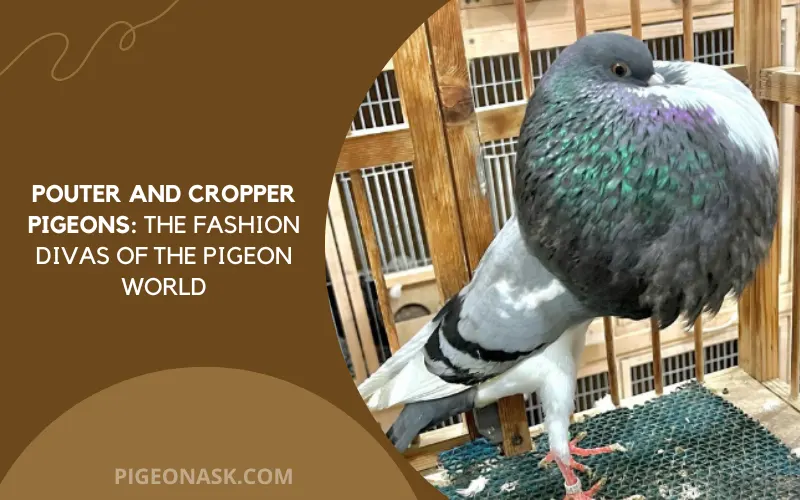
By the end of this article, you’ll not just be more knowledgeable about why the Pouter and Cropper are the same but also about all the types of pigeons in this category and how to take care of them in the proper way.
Looking for more articles about pigeon type:
Overview of Pouter and Cropper Pigeon
Pouter and Cropper are fancy pigeon types that most people own purely for the sake of having a pretty bird as a pet. They are the descendants of Rock Dove and now have too many different types to count from.
While some of these pigeon types are labeled as pouters and others as croppers, they’re practically the same, and even their names are inspired by the same source.
The key characteristic of these birds is that they distend their lower esophageal region (or crop) to the point that it looks like an inflatable balloon. And the reason why many of these birds are called Croppers is for the act of inflating their crop.
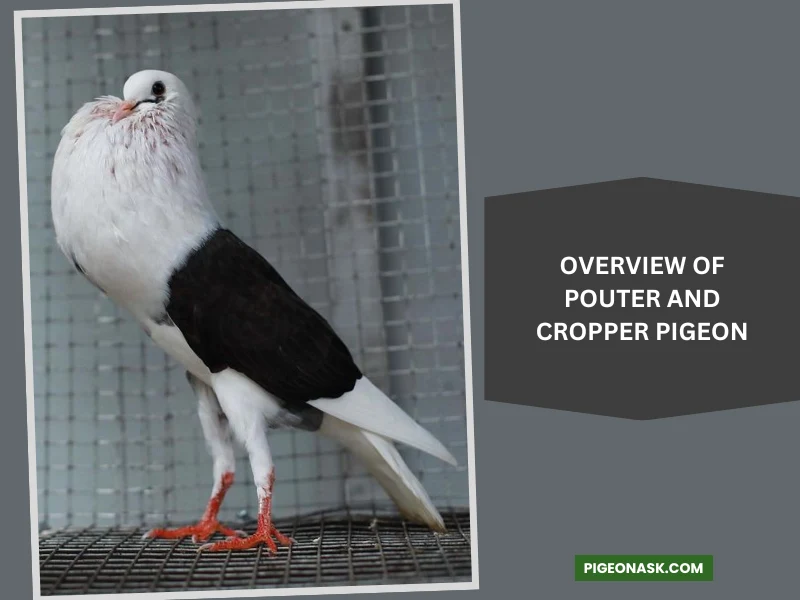
You can see why some of the types are referred to as pouters as well, as the name indicates the same trait.
For the record, many mistake the names “Pouters” or “Croppers” as distinctive breeds. Those are not breeds but rather names of a category of pigeons with similar physical attributes.
Like, the tendency to swell the crop for instance. These types tend to be pretty shy, dominant, and tame too.
Most Popular and Well-Known Ones
More than fifteen breeds of Pouter and Cropper pigeons are bred regularly to this date. Since new experiments and crossbreeding are being attempted even now, it’s hard to keep track of all the types.
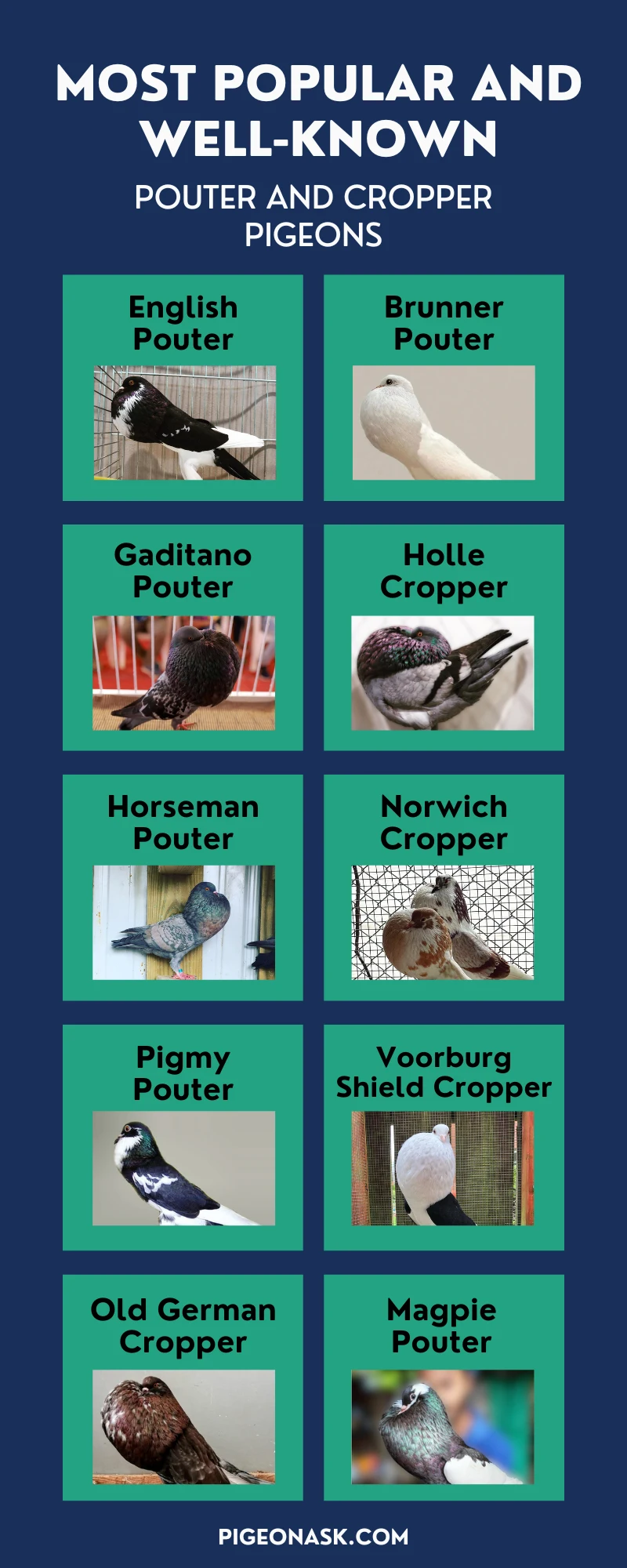
Here, we have discussed the most popular and well-known ones to help you distinguish them a little better from now on –
01. English Pouter
Described by Charles Darwin as the most exceptional looking among all domestic breeds, the English Pouter takes the crown as the most famous and most admired Pouter breed.
They were originally bred in the United Kingdom. With stunning long legs, volumed feathers, and the extraordinary ability to keep their globe inflated for a long time, English Pouters is certainly a treat to look at.
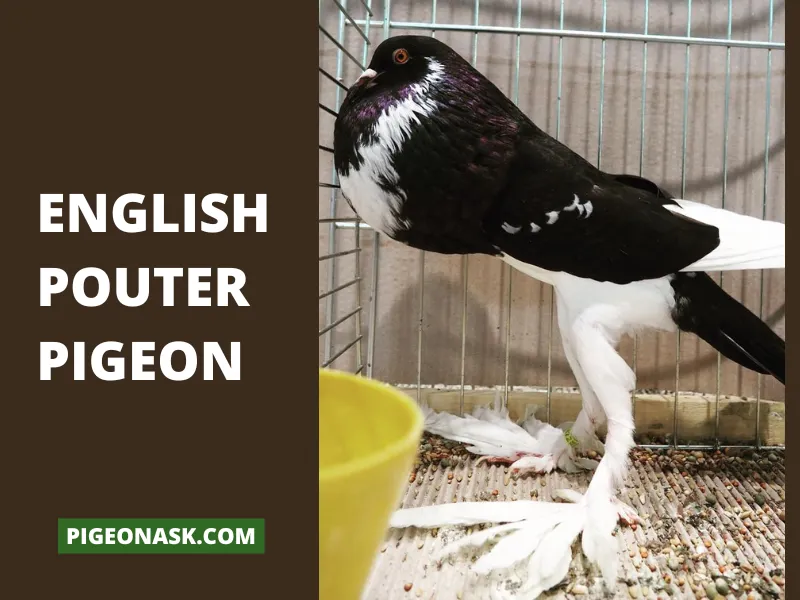
These Pouters were first born out of selective breeding of several fancy pigeon types over the decades.
Some assume the crossbreeding first started with Dutch Cropper and Parisian Pouter, while pigeon expert John Moore claims they were born from crossbreeding now-extinct Horseman pigeon with several other Cropper types.
02. Brunner Pouter
Brunner Pouters are originally from the Czech Republic, but they’re a heavily popular breed now in Germany. The breed looks similar to other members of its Pouter family but is the smallest one in size.
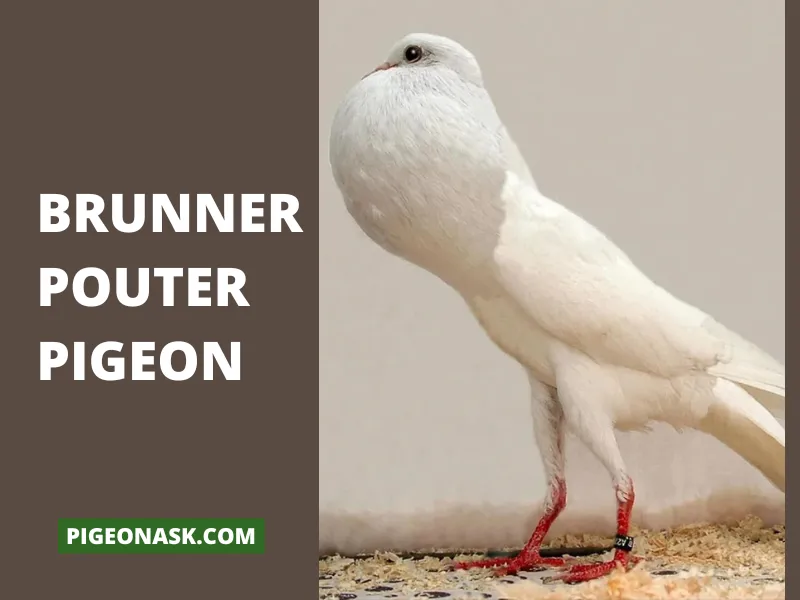
They’re one of the more slender and taller pouter breeds and feature distinctive red lower legs.
03. Gaditano Pouter
As you can somewhat assume from the name, Gaditano Pouters were originally bred in Spain and are now a famous fancy pigeon breed in the US. They’re one of the bigger and rounder Pouters out there.
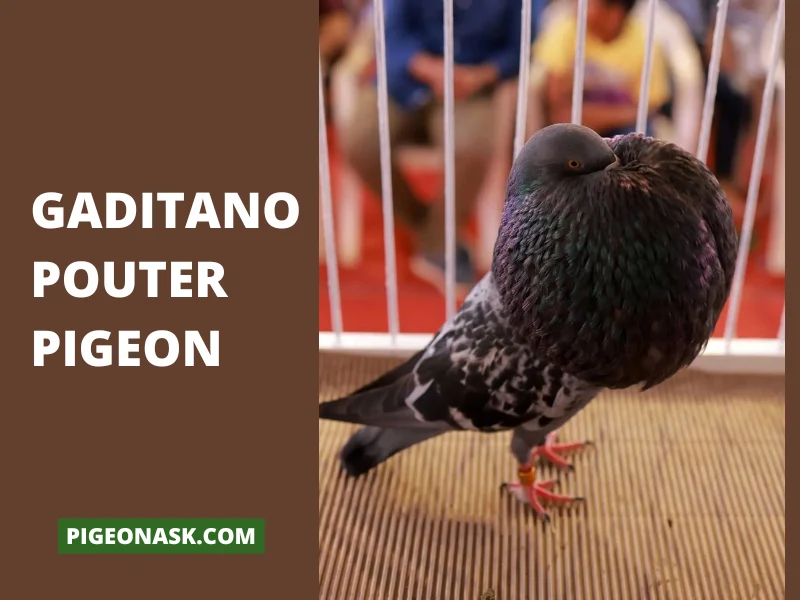
While they tend to have feathers of many colors, these Pouters are easier to distinguish as the feathers of their globe and wings tend to be striped instead of a solid color.
04. Holle Cropper
This breed is also famous as the “Amsterdam Balloon Cropper” for its Dutch roots.
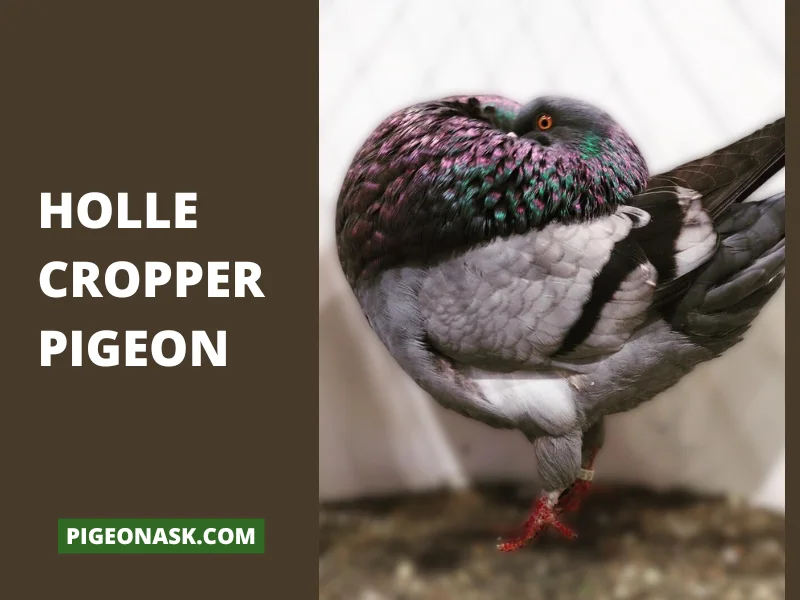
These pigeons are a member of the Pigmy Pouter family and have been bred for centuries in the Netherlands. They’re more on the smaller side with a round body and smaller legs. Usually, they have voluptuous, dark-color feathers.
05. Horseman Pouter
These Pouters are actually called “Horseman Thief Pouters.” They’re one of the oldest breeds, originally from Spain, and are thought to be a direct crossbreed of the now-extinct Horseman and another Pouter breed.
They were even primarily named “Pouting Horseman” for resembling Horseman to a greater extent, along with the signature swollen globe.
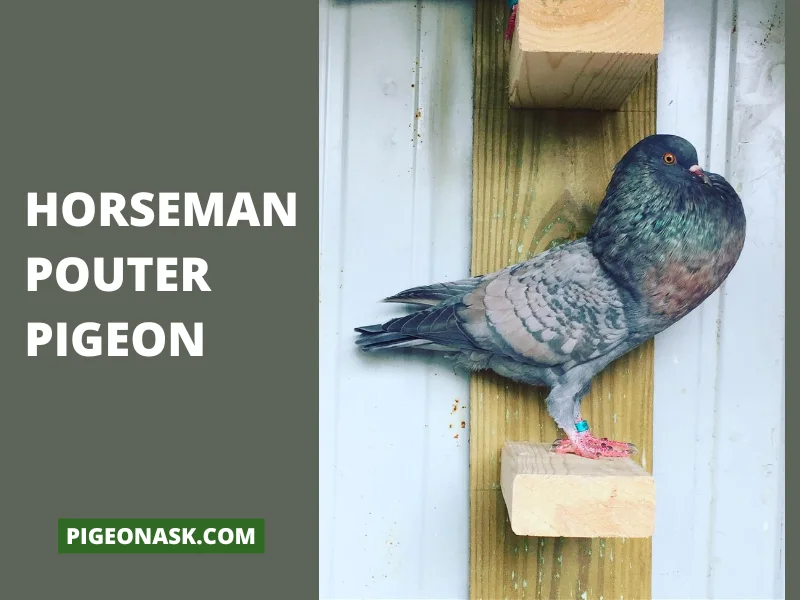
Before being imported to the US in 2004, these pigeons have been quite the popular show bird breed in the United Kingdom, mostly in Scotland.
They’re one of the few dual-purpose birds that exist in this age. Horseman Pouters are usually trained to fight and snatch other birds, mainly for show purposes.
06. Norwich Cropper
Although the name might suggest otherwise, these birds were first bred in the Netherlands. Later, they were brought to the United Kingdom for regular breeding and became popular as the “Norwich Cropper.”
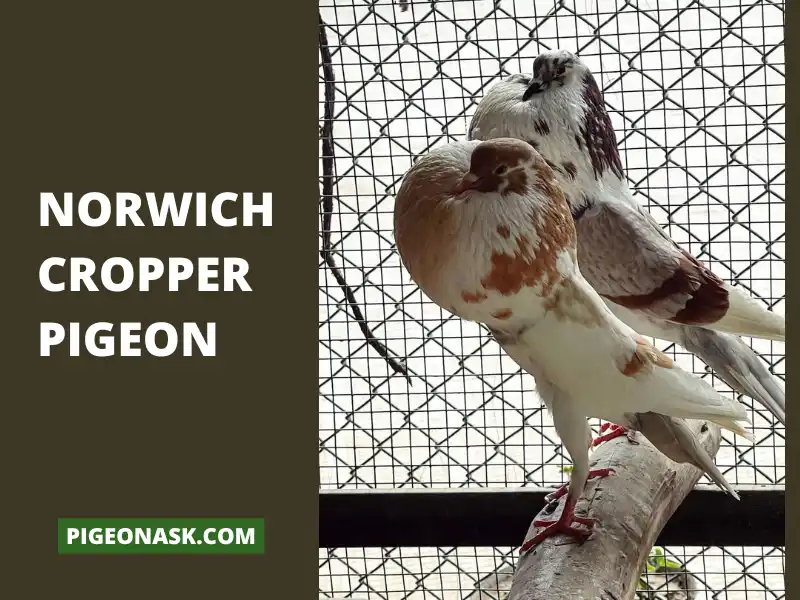
According to popular belief, they’re most likely to be a direct descendent of the Oploper pigeon. Physically, they are more on the medium and large bird side of the Cropper family.
07. Pigmy Pouter
These Pouters resemble English Pouters a little, although not as majestic. They tend to be smaller in size but still massive compared to Brunner Pouter.
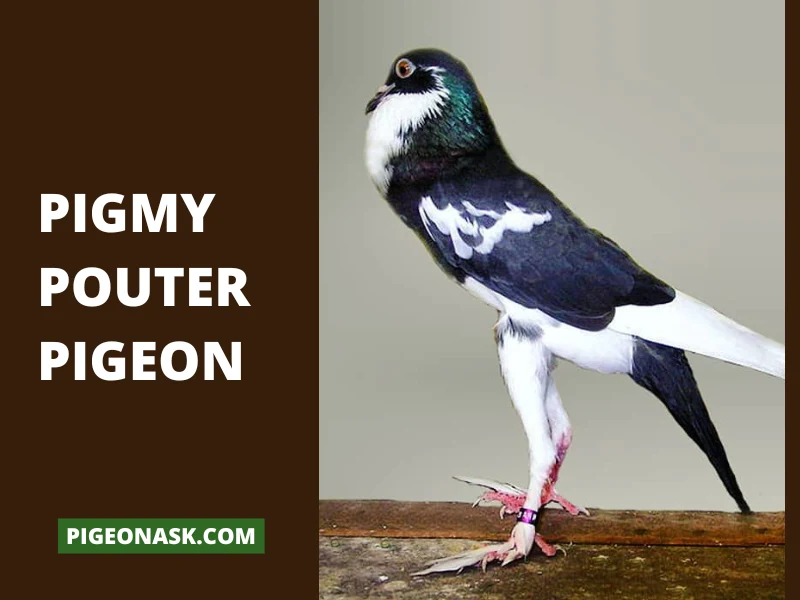
Pigmy Pouters were originally bred in England and are always compared to English Pouters for their looks, although they are not as well-admired.
08. Voorburg Shield Cropper
Another Dutch breed, originally from Voorburg, Netherlands. An illustrator named Van Gink first bred Shield Croppers by selectively crossbreeding White Croppers with other pigeons. His main goal was to breed a Cropper with white breasts.
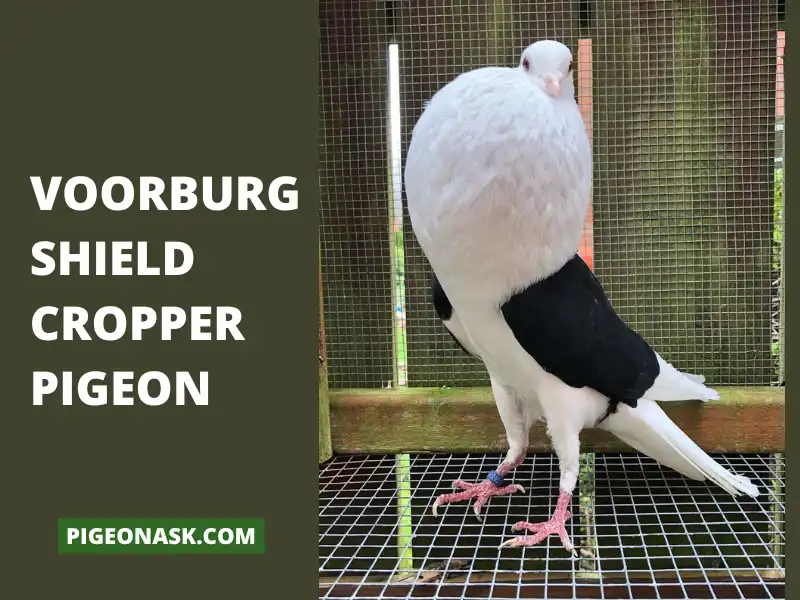
Voorburg Shield Croppers are one of the more admired show birds for their sociable attitude towards humans. They’re medium-sized Croppers with medium-sized globes.
09. Old German Cropper
As can be guessed from the name, these Croppers were initially bred in Hungary and Germany several centuries ago. The name is a direct translation of their original name, “Altdeutscher Kröpfer.”
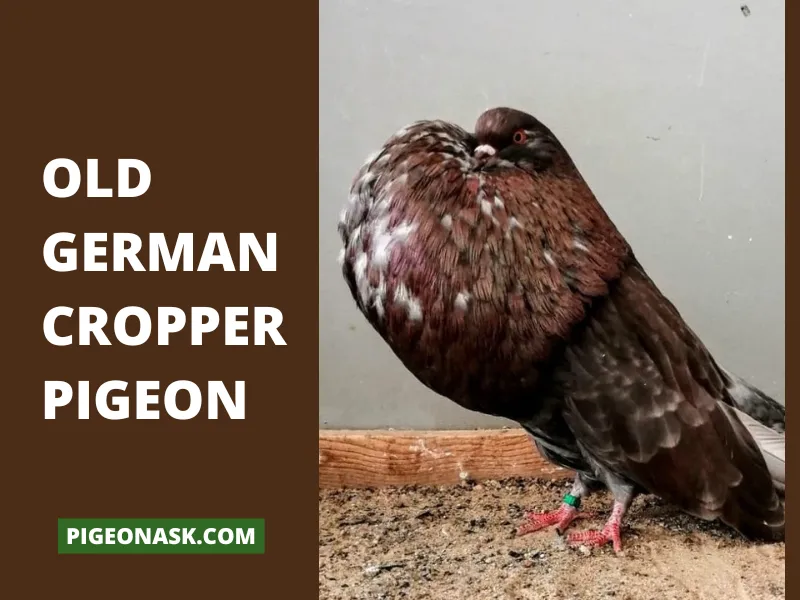
This old breed is a large one and is more popular for its well-inflated round globe.
10. Magpie Pouters
Magpie Pouters are an interesting breed of fancy pigeons, as they look like a complete package of all the unique attributes of show pigeons. From the trademark inflated crop to muffed legs and eccentric feathers of different colors, they got it all.
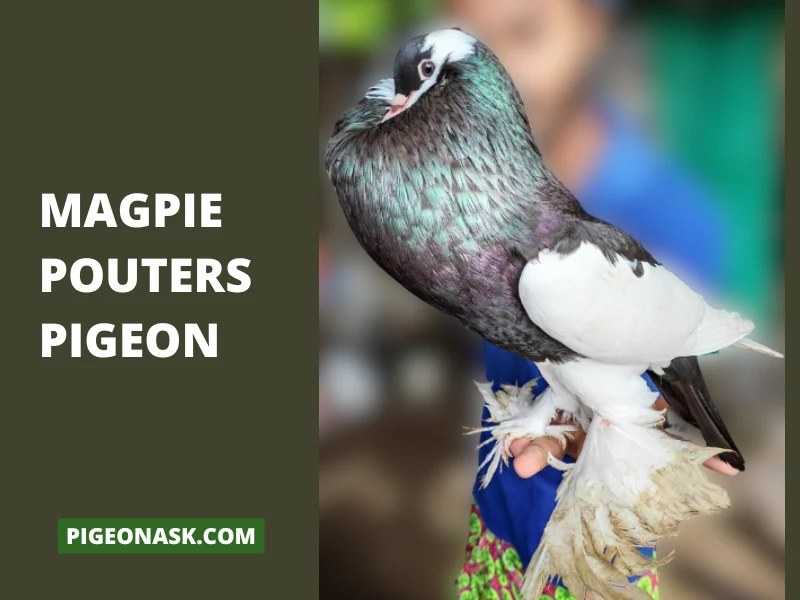
There are debates about their original birthplace, as some claim they’re from Central Europe, many more believe they were primarily bred in the United Kingdom like many of their other Pouter family members.
These pigeons are a result of selective crossbreeding between Magpie, Poulter, and Swallow breeds.
Common Physical Appearance and Unique Features
Pouter and Cropper are famous for their inflated globes and model-esque posture. While they vary in size, some attributes are common in all birds. Like their heads, when the chest is puffed up, it is always aligned with the toes.
These birds usually tend to have a slender body. A long neck that retreats with a swollen globe and long legs that separate them from other Rock dove descendants. Fantail is a common attribute in most of the breeds.
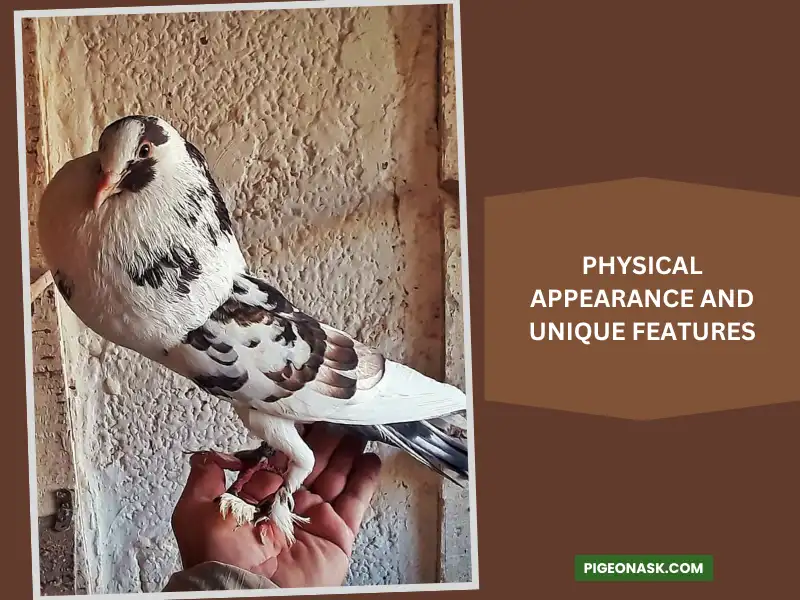
Not all birds can inflate the same. While some Pouter and Cropper can flaunt a large round globe, medium-sized one is a common phenomenon among many types.
They come in all sorts of colors as all Croppers and Pouters were crossbred from a versatile selection of pigeons.
Despite being similar in most ways, all breeds have some unique traits that separate them from other breeds. Like Brunner, Pouters have red legs, and Magpie Pouters have muffs.
But the elevated physical features aren’t all to describe the Pouter and Cropper family, these show birds are a lot more than just their ability to puff up the chest and strut on the stage.
Behavior and Personality
These pigeons have been domesticated for centuries, primarily for show and exhibition purposes. And the training shows in their behavior.
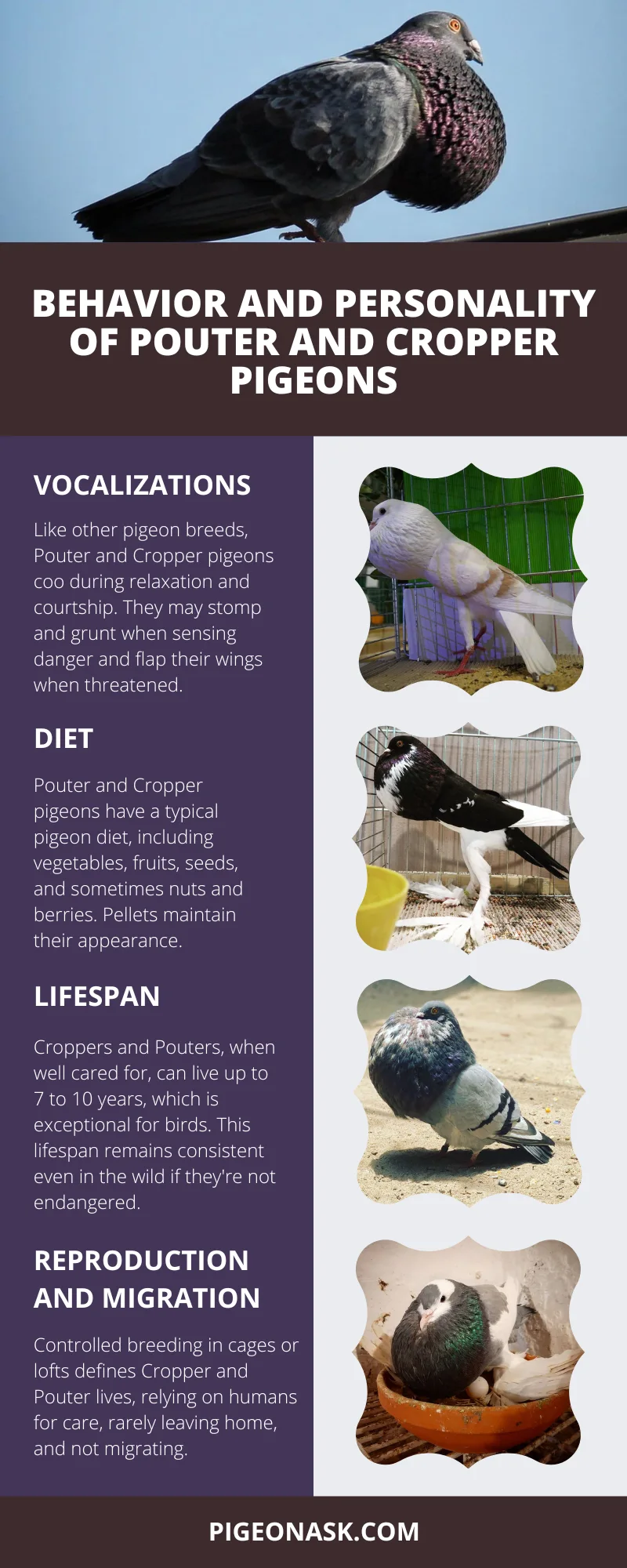
Most Pouter and Cropper are tame and gentle, with curious head-tilting at everything happening around them. Breeds like Voorburg Shield Cropper love to be around people.
01. Vocalizations
Pouter and Cropper vocalize the same way all the other pigeon breeds do. They mostly coo for prolonged periods when relaxed or trying to attract female birds.
When a potential threat is nearby, they stomp their feet and grunt. If it’s too dangerous, they make sounds by flapping their wings instead of hissing or granting.
02. Diet
There’s no exceptional addition to their diet, Pouter and Cropper eat everything other pigeons eat. They usually rely on an herbivore diet of vegetables, fruits, and seeds. They should be fed nuts and berries occasionally to fulfill the nutrient cycle.
A well-rounded pigeon pellet can take care of most of their nutrition needs. Since Croppers and Pouters are fancy pigeon breeds mostly bred for exhibition purposes, their diet should have all the elements needed for a good look.
Safflower seeds and garlic help a lot to maintain their feather’s lustrous appearance.
03. Lifespan
Croppers and Pouters have both the elevated look and the long lifespan rare for most other birds. When domesticated and kept with proper care, these birds can live up to 7 to 10 years.
Even as wild birds, the expectancy remains the same if they’re not caught, hunted down, or killed.
04. Reproduction and Migration
As fancy breeds, those birds are hardly given the chance to mate naturally. The breeder or the owner manages the mating process of two birds. They’re selectively paired to get all the target traits from the new birds.
Those traits usually tend to be feather color, pattern, size of the crops, the structure of the legs, and social behavior.
Due to the nature of the process, the breeding is mostly done in cages. They rarely get the chance to live in wildlife. Wild or domesticated, the male birds always coo and inflate their crop as much as possible to impress the desired partner.
These breeds are often kept in cages or lofts and are conditioned to obey humans. So they never leave their home.
Besides, Croppers and Pouters usually depend on their owners or breeders for all their needs, which means they don’t have to fly to a foreign region for survival. Due to century-long conditioning, even wild ones prefer their old home over migration.
Geographic Distribution of These Breeds in World Wide
These fancy birds were primarily crossbred in Europe. If we trace back the origins, we’ll see their common ancestors come from around Central and Northwestern Europe.
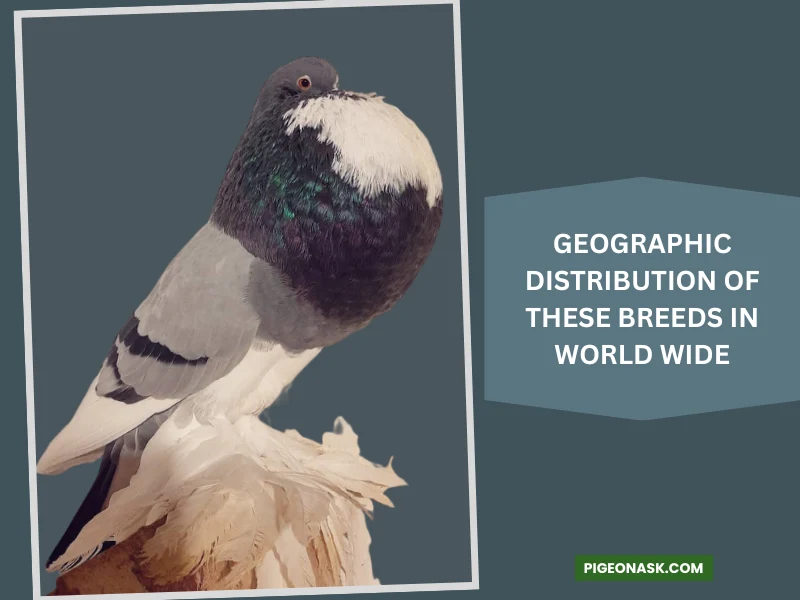
The Netherlands and the United Kingdom are the birthplace of a significant number of Cropper and Pouter breeds. Germany, Hungary, and the Czech Republic (then Bavaria) came afterward.
Nowadays, they’re more popular in the US as “Fancy breeds.” These days, English Pouters and Norwich Croppers are bred more in the States than in the UK.
Apart from that, these pigeons have gained massive popularity as pets in Asia, especially in the Indian subcontinent.
The Popularity and Cultural Significance of Pouter and Cropper
If we look at breeds like Old German Croppers or English Pouters, we can trace their origins back to as early as 400 years and even more.
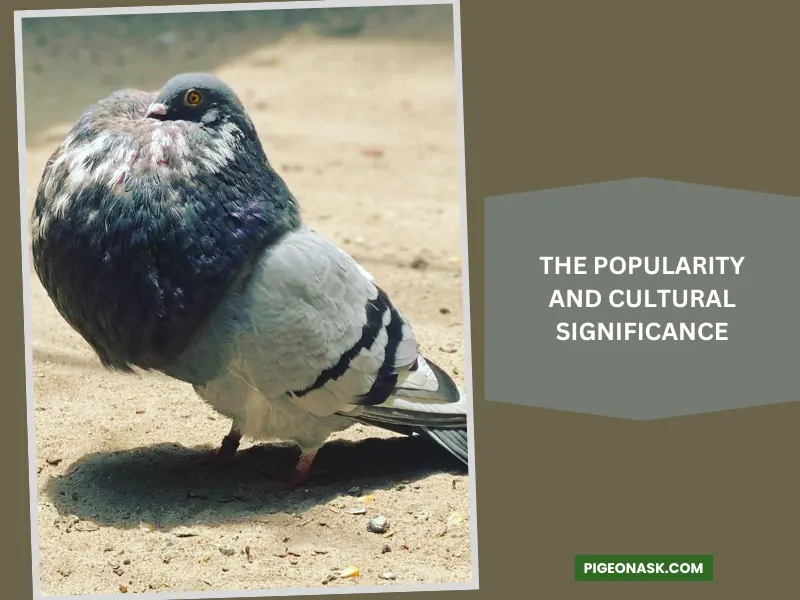
And they’ve been massively bred for one particular purpose ever since, which goes for every other Pouter and Cropper. These pigeons with the big puffed-up chests are culturally more significant than many admirers could imagine.
Traditional and Cultural Associations
Most Pouter and Cropper were originally bred from curiosity and the desire to experiment.
After the Middle Ages, pigeons became an object of great interest among the people of Great Britain, and they started to selectively crossbreed different types to see how the result would go.
And that hype reigned over many other countries in Northwestern and Central Europe, including Germany and the Netherlands.
Instead of harvesting as livestock or to use for any other means of survival, some pigeons were kept domesticated for the sole purpose of exhibition or race.
Pouter and Cropper became one of these types due to their uniquely applaudable appearance. Many of these pigeons were trained to serve as messengers or hunt other birds for recreational entertainment.
Horseman Thief Pouter, for instance. These birds were traditionally bred and taught to snatch objects or hunt other birds, and this is how they got the “thief’ title. And they’re still one of the few pigeon breeds who are trained for duals.
Pigeon Shows and Competitions
Croppers and Pouters are one of the greatest attractions in the pigeon shows and races. Most breeds are bred, groomed, and trained solely for these events.
In the USA, they’re always in the top choices of the fancy pigeon category for this reason alone.
Breeding and Care Tips for Pouter and Cropper
Since they’re mainly bred with the purpose of bringing in a new batch of fancy show pigeons, the breeder must always be careful with their choices. If the traits aren’t similar or plausible, the aftermath won’t be a treat for the eyes.
Along with that, health is a great concern, so one should always pair healthy birds together.
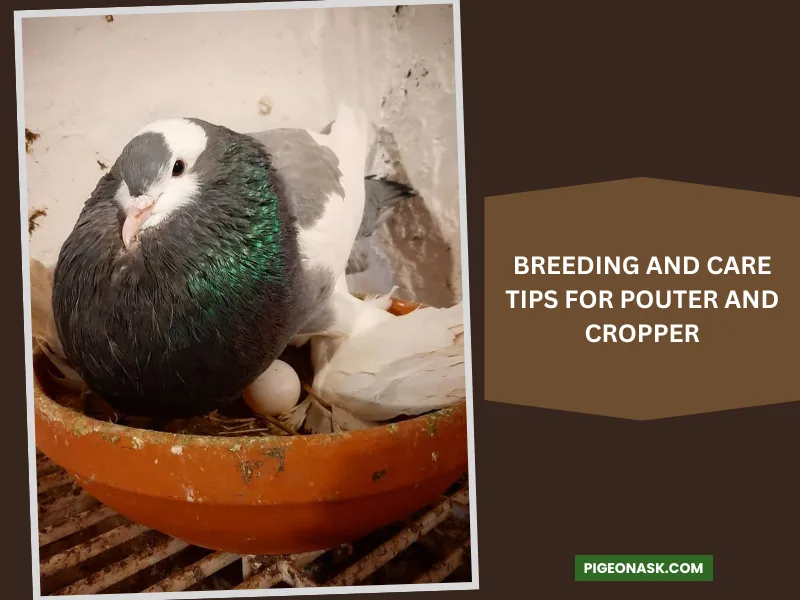
It’s better and safer to breed them in a cage. Some Pouters and Cropers prefer lofts over cages, but the loft should be open and spacious enough if it’s for breeding. Keep around three pairs in the cage/loft to eliminate the chances of fighting.
A lot of people get confused about the nature of show pigeons. So it’s pretty normal to wonder, can these pigeons be kept as indoor pets?
Yes, they can be, and these birds make brilliant pets. Due to the sociable nature and gentle demeanor of Pouter and Cropper, it’s easier to handle and take care of them as domestic birds.
Must not act hostile. If you show them enough love, these birds will act exactly as you want. As pigeons, they don’t need much.
Everything else is the same as you’d do for other pigeons. You may have to take them to vets for regular check-ups to keep the birds ready for shows or exhibitions.
Conclusion
Fancy pigeons are always a delight for the eyes and the soul, no doubt. Among them, Pouter and Cropper are two distinct marvels that are fun in the races and as pets in the house.
With proper attention and care, you can become a proud breeder of a beautiful English Pouter or Old German Cropper in no time. For more updates on fancy pigeon breeds, follow us on Facebook, Twitter, and Pinterest.
Image Credit:
- Instagram.com
